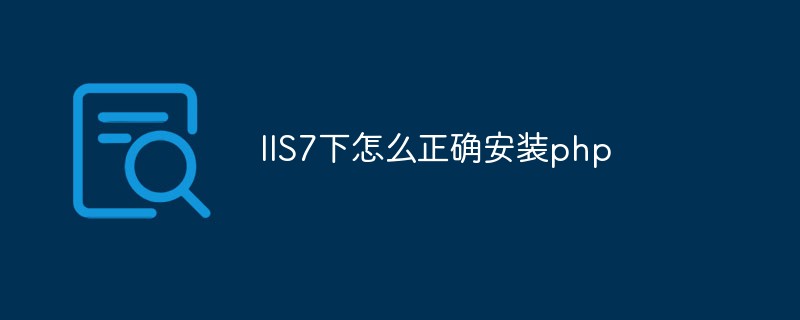How to correctly install PHP under IIS7: 1. Open the [Programs and Features] option and install IIS7; 2. Download PHP Manager from the official website and install it; 3. Download the appropriate PHP version and unzip it to the specified Directory; 4. Open the IIS manager and set the PHP installation directory.

The installation method is as follows:
(Recommended tutorial: java video tutorial)
1. Install IIS7
Open [Programs and Features], then click [Turn Windows features on or off]

Check [IIS Management Console] and CGI, Then click the [OK] button and wait for the installation to complete. This process may require a system installation CD.

After installation, go to [Administrative Tools] under [Control Panel], open [Internet Information Services (IIS) Manager], you can see [FastCGI Settings] .

2. Install PHP Manager
Download PHP Manager from the official website. Among them, x86 is used by 32-bit Windows systems, and x64 is used by 64-bit Windows systems. Please download according to the Windows system you are using.

After downloading, double-click to install by default. After the installation is complete, open [Internet Information Services (IIS) Manager] to see [PHP Manager].

3. Install PHP
1. Visit http://windows.php.net and download the required PHP version.
Note, select the NTS (non-thread-safe) ZIP version.
2. After downloading, unzip it to the specified directory, such as C:\PHP.
Then, open [Internet Information Services (IIS) Manager], double-click the [PHP Manager] icon, and click (1) [Register new PHP version].
Enter or select php-cgi.exe in the previously decompressed directory (for example, C:\PHP) in the pop-up window. When finished, click [OK].

3. Click [check phpinfo()], select a site for checking the PHP environment, and check whether PHP is installed successfully.
Note: If you have registered multiple PHP versions, you can click [Change PHP version] to switch.
Related recommendations: php training
The above is the detailed content of How to correctly install php under IIS7. For more information, please follow other related articles on the PHP Chinese website!